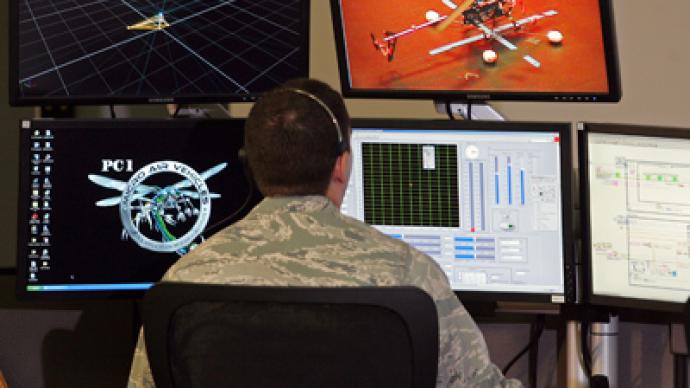Pentagon's new budget: Rise of the machines

The Pentagon detailed the Defense Department cuts on Thursday that US President Barack Obama hinted at earlier in the month.
While the agenda for the DoD isn’t full of surprises, it exemplifies a trend that the military has seen more and more as of late: droves of drones replacing real-life soldiers.Under the Pentagon’s new budget plan, America’s war-time arsenal will see a drastic decrease in the number of servicemen, with the DoD instead spending money on robotic unmanned vehicles. Drone aircraft, drone submarines and drone helicopters will be added by the dozens while the US military eliminates around 100,000 positions. The Defense Department asks Congress for $525 billion, a smaller number than the $553 billion it wanted in 2011. Cuts will come in all divisions of the Armed Forces, with the Army losing 80,000 soldiers and the Marine Corps around 20,000. The Air Force will miss nearly 100 cargo planes and the Navy will retire an arsenal of cruisers earlier than it had planned.But as the Pentagon brings down its numbers and will save a few thousand men and women from the eventual onslaught of PTSD, it will focus its development not on bettering things for the human beings fighting America’s wars, but on a futuristic fleet of space-age weaponry. Come 2015, military pay raises will begin to stagger and, barring any unforeseen foreign involvements, the tally of troops will continue to shrink. Once pay plateaus within the service, other perks will eventually be put in the trash as well. “We cannot ignore some hard realities,” Army Gen. Martin E. Dempsey says. “Pay and benefits are now roughly one-third of defense spending. … pay will need to grow more slowly in the future.”As men and women leave the military, in a way they will be replaced, however, thanks to the addition of high tech drones. Under the new budget, at least four new Predator and Reaper drone air patrols — each consisting of upwards of four crafts a piece — will be added to the military’s arsenal. As a result, the wars will rely less on on-the-ground marksmanship but on robotic planes controlled from command stations thousands of miles away. Under the sea, submarines will be outfitted with massive missiles and in the sky the US will get “improved air-to-air missiles,” which will also be operated remotely. Defense Secretary Leon Panetta says the new plan will allow the military to “retain a decisive technological edge,” but, in other words, robots will be the wave of the not-so-distant future. The Army will see the addition of the Gray Eagle drone and the Navy will see a surge in Fire Scout robo-copters. The budget also calls for “new unmanned systems with increased capabilities,” which aren’t exactly discussed in detail. Senator John McCain, a war vet himself, isn’t happy with the budget and says it "ignores the lessons of history." Even with the drop of 100,000 troops, however, the size of the US military will still stay larger than it was before the September 11 terrorist attacks. McCain might not be happy with seeing the number of personnel plummet, but the truth is the United States isn’t ignoring history — it’s making it. That doesn’t mean that the text book chapters in years to come detailing all-out robotic warfare will be a pretty to read, though.















